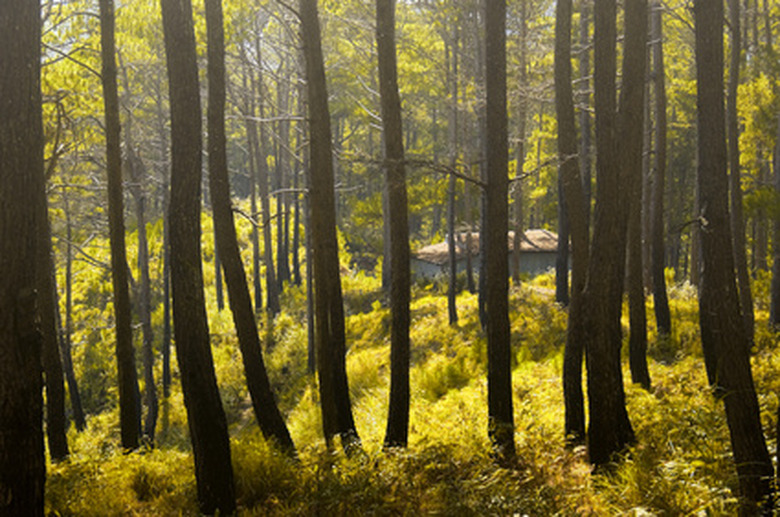What Is Pine Resin?
Pine resin is the harvested tree sap of a pine tree. Pine trees belong to the Pinus genus and the Pinaceae family and are abundant throughout the world, including North and South America, Asia, Africa and Europe. Pine trees are tapped for their sap, which is used in several industrial and medicinal applications.
Identification
Harvested pine resin is also known as rosin, pitch and colophony. During the process, the side of a pine tree is cut to expose the tree's sap ducts. The sap is then collected in containers for processing. Numerous products are produced from pine resin.
- Pine resin is the harvested tree sap of a pine tree.
- Pine trees are tapped for their sap, which is used in several industrial and medicinal applications.
Industrial Names
Pine resin has many different names in industrial products. According to Dr. John L. Meisenheimer of OrlandoSkinDoc.com, some of these names include abitol, gum rosin, rosin gum, tall rosin, colophonium, pentalyn, wood rosin, abietyl alcohol, granolite SG and resina terebinthinae.
Industrial Uses
According to the University of California at Los Angeles, pine resin is used in the process of turpentine distillation. Pine resin is also used to make adhesives, asphalt, drive belts, grease, linoleum, oils, pine-oil cleaners, paper, paints, polishes, printing inks, putty, polyethylene, soaps, varnish and waxes.
Cosmetic and Medicinal Uses
Pine resin is used in cosmetics. It is a common ingredient in mascaras, lipsticks, foundations, creams and other cosmetics including sunscreen.
In medicine, pine resin is used to make dental cement and ulcer bandages. It is also used in periodontal packings and in veterinary medications. According to Scents of Earth, pine resin is used for urinary tract infections, asthma, bronchitis, coughs, respiratory infections and muscle aches in natural medicine.
- Pine resin has many different names in industrial products.
- In medicine, pine resin is used to make dental cement and ulcer bandages.
Allergies
Some people are allergic to pine resin. Since pine resin is used in many products and cosmetics, contact with this allergen may occur. People can avoid an allergic reaction by learning what products contain pine resin and avoiding them, protecting the skin from contact with pine resin and making others aware of what products they may use that can cause an indirect allergic reaction.
Stains
Pine resin hardens over time, so if pine resin stains clothes, furniture or carpet, you need to remove it immediately. Pre-treat the stain with laundry detergent or stain remover before laundering. For carpets and upholstery, treat the spot with rubbing alcohol, then turpentine and then soap and water, according to the University of Illinois.
